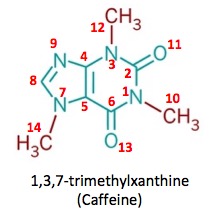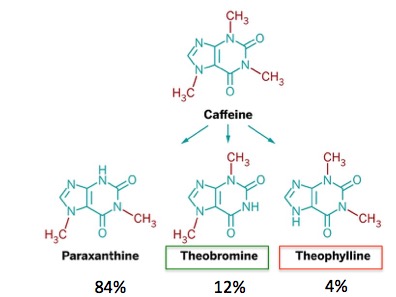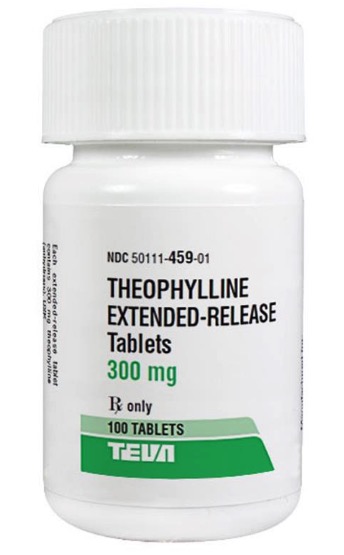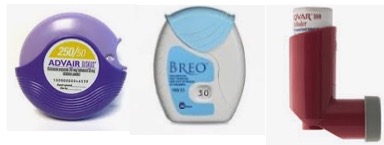If there is a more studied food or beverage than coffee I sure can't think of it. Here are some of the health claims you'll find sprinkled around the Internet - prevention or treatment of:
- Heart disease
- Multiple sclerosis
- Type 2 diabetes
- Liver disease
- Parkinson's
- Alzheimer's
- High blood pressure
- Computer-related back problems
- Gallstones
- Melanoma
- Prostate cancer
The last two are of particular interest because in California coffee both causes and prevents cancer. (1)
Of the 11 maladies listed above, the chance that coffee can treat all of them is zero. Life doesn't work that way. It is much more likely that it has no significant impact on any of them.
One condition that does not typically appear is asthma. Why have I picked asthma? Because, at least biochemically, it should. Why?
To explain this I must report with great sadness that you must (once again) pass through...
The Dreaded Chemistry Lesson From Hell.®

The Dreaded Chemistry Lesson From Hell. It's OK, nerds and assorted other social misfits. Admit it. You enjoy this. Don't try to pretend otherwise.
If I ask you to name one chemical in coffee, 100% of you will say caffeine, which just happens to be the chemical that makes coffee a "remedy" for asthma. Sort of. Although caffeine offers some relief from asthma is doesn't do a very good job of it. But, like we sometimes see in the world of drugs, a molecule that is not therapeutic (e.g., Valtrex for herpes) can be converted to one that is (acyclovir) by a metabolic process, which is almost always carried out by the liver (2). This is the case with caffeine aka 1,3,7-trimethylxanthine (Figure 1).

Figure 1. The chemical structure and numbering system of caffeine. The nitrogen atom at 4:00 is assigned #1 for purposes of naming the molecule. Why? Who knows? Then the numbers of the other atoms are assigned in such a way as to maximize the number of people who hate organic chemistry. Hence, the name 3,7-Dihydro-1,3,7-trimethyl-1H-purine-2,6-dione. Worse still, there are 10 different names for caffeine, all correct. This is one reason why no organic chemist can exist without some degree of deep-seated psychological pathology. Some are worse than others.
The liver really likes to chomp on (3) the methyl groups of caffeine, and when it does so three metabolites are formed. But some methyl groups are tastier than others (Figure 2).

Figure 2. Human metabolism of caffeine. The methyl group connected to nitrogen # 3 (Figure 1) is metabolized (removed) most easily, which forms paraxanthine. Next in line is the methyl group at nitrogen #1, which forms theobromine (green box), a component of chocolate. The methyl group at nitrogen # 7 is rather stubborn, which accounts for the small amount of theophylline (red box) that is formed.
Original image: C&E News
It is fair to ask:
1. Why I am putting you through this torture?
2. What does this have to do with asthma?
And the answers are: 1) Because I can, and 2) This:

Theophylline - an old but effective asthma drug. Photo: Allivet
Theophylline, which was first used for asthma in 1922, was the first-line treatment for asthma before it was replaced by inhalers that combine antiinflammatory steroids and long-acting beta-agonists (LABAs), which are bronchodilators. Perhaps the best known, Advair, which was launched in 1998, represented a dramatic improvement over theophylline for a number of reasons, especially improved efficacy (4). The inhalers simply work much better.

So, will coffee really help with asthma? I guess it could, but you'd have to drink a helluva lot of it. How much?
A typical daily dose of theophylline for asthmatics is about 600 milligrams per day (5). Doing the math (which I will almost certainly screw up):
- A cup of coffee contains 95 mg of caffeine.
- Since only 4% if it is converted to theophylline, one cup will provide only 3.8 mg of the drug.
- So, you would have to drink 158 cups of coffee daily to get a therapeutic dose of theophylline.
- If you drink 158 cups of coffee asthma is gonna be the least of your problems.

Photo: ABC
A final thought. For those of you who wish to lead a "chemical- or drug-free" life and are chain-slurping coffee to stay awake at your desk, now you know that with every sip of coffee your body is manufacturing a prescription drug. But it won't harm you. No need to lose any sleep over it.
NOTES:
(1) If you're ever looking for a magnificent example of how crazy public health laws are in California this will do nicely. And there is plenty more evidence. It's called Proposition 65.
(2) Drugs that are inactive until activated by the body are called pro-drugs. (See ADHD Sufferers—Pay Attention: Here's How Vyvanse Works.)
(3) "Chomp" is not strictly correct. A more precise term would be "oxidative demethylation promoted by cytochrome P450 CYP1A2." Chomp on that.
(4) It is far better to prevent asthma than to treat it. This is why I have omitted discussion of rescue inhalers, which usually contain albuterol, a fast-acting bronchodilator.
(5) Another reason that theophylline is rarely used is that is has a low therapeutic index - the difference between an effective dose and a toxic dose. Patients taking theophylline need to have their blood levels of the drug tested from time to time to make sure that there is not too much circulating theophylline, which can be dangerous.




